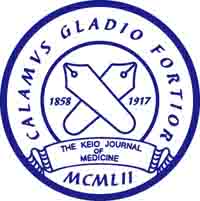<Title:> The History and Future of Unlinked Total Elbow Arthroplasty
<Author(s):> Takuji Iwamoto, Hiroyasu Ikegami, Taku Suzuki, Satoshi Oki, Noboru Matsumura, Masaya Nakamura, Morio Matsumoto, Kazuki Sato
<Corresponding author E-Mill:> iwatakuji(at)gmail.com
<Abstract:> Unlinked total elbow arthroplasty (TEA), which has no mechanical connection between the humeral and ulnar components, has theoretical advantages based on its near-normal elbow kinematics and the preservation of bone stock. Unlinked TEA is appropriate only for patients who have limited bone loss or limited deformity and good ligamentous function. This is because postoperative instability has been a major complication of unlinked prostheses. The concept and goal of unlinked TEA is to share the loading stress on the bone implant interface with the surrounding tissues. Although the loosening rate of unlinked prostheses theoretically should be lower than that of linked prostheses (which have a mechanical connection between the humeral and ulnar components), there is no clear evidence that unlinked TEAs are superior to linked TEAs in this respect. However, we believe that primary TEA should be performed using an unlinked TEA, especially for younger patients, because revision surgery for unlinked TEA results in longer prosthesis survival than revision surgery for linked TEA. Improvement of the design of unlinked prostheses and the introduction of less invasive surgical techniques are required to reduce postoperative instability.
<Keywords:> total elbow arthroplasty, unlinked type, linked type, postoperative instability
<URL:> https://www.jstage.jst.go.jp/article/kjm/advpub/0/advpub_2017-0007-IR/_html


![Toward the Mysteries of Sleep [Published online Keio J Med, 68, 27-27, by J-STAGE]](http://kjm.pupu.jp/blog/wp-content/uploads/2019/03/68-001-ABST-100x100.jpg)
![Clinical Complete Response of Recurrent Gastric Cancer after Third-line CPT-11 Chemotherapy [Published online Keio J Med, 72, 60-64, by J-STAGE]](http://kjm.pupu.jp/blog/wp-content/uploads/2023/06/2022-0004-CR-100x100.jpg)
![Dynamic Role of the GTP Energy Metabolism in Cancers [Published online Keio J Med, 65, 21-21, by J-STAGE]](http://kjm.pupu.jp/blog/wp-content/uploads/2016/03/65-001-ABST-100x100.jpg)
![Reoperative Aortic Valve Replacement for Structural Valve Deterioration through a Lower Hemisternotomy after a Previous Bentall Procedure in a Patient with Tracheostomy [Published online Keio J Med, 72, 21-25, by J-STAGE]](http://kjm.pupu.jp/blog/wp-content/uploads/2023/03/2022-0009-CR-100x100.jpg)
![Roles of Hypoxia Response in Retinal Development and Pathophysiology [Published online Keio J Med, 67, 1-9, by J-STAGE]](http://kjm.pupu.jp/blog/wp-content/uploads/2018/03/2017-0002-IR-100x100.jpg)
![Food Protein-induced Enterocolitis Syndrome [Published online in advanced , by J-STAGE]](http://kjm.pupu.jp/blog/wp-content/uploads/2023/01/2022-0016-IR-100x100.jpg)
![<i>Listeria monocytogenes</i> Meningitis Complicating Rotavirus Gastroenteritis in an Immunocompetent Child [Published online Keio J Med, 66, 25-28, by J-STAGE]](http://kjm.pupu.jp/blog/wp-content/uploads/2017/06/2016-0007-CR-100x100.jpg)
![Syndrome of Inappropriate Secretion of Antidiuretic Hormone Caused by Very Short-term Use of Proton Pump Inhibitor [Published online Keio J Med, 70, 19-23, by J-STAGE]](http://kjm.pupu.jp/blog/wp-content/uploads/2021/03/2020-0008-CR-100x100.jpg)
![Cardiopulmonary Resuscitation Training in Schools: A Comparison of Trainee Satisfaction among Different Age Groups [Published online Keio J Med, 65, 49-56, by J-STAGE]](http://kjm.pupu.jp/blog/wp-content/uploads/2016/09/2015-0009-OA-100x100.jpg)
![The Use of Cerebral Oximetry in Acute Carbon MonoxideIntoxication: A Preliminary Study [Published online Keio J Med, 64, 57-61, by J-STAGE]](http://kjm.pupu.jp/blog/wp-content/uploads/2015/12/2014-0010-OA1-100x100.jpg)